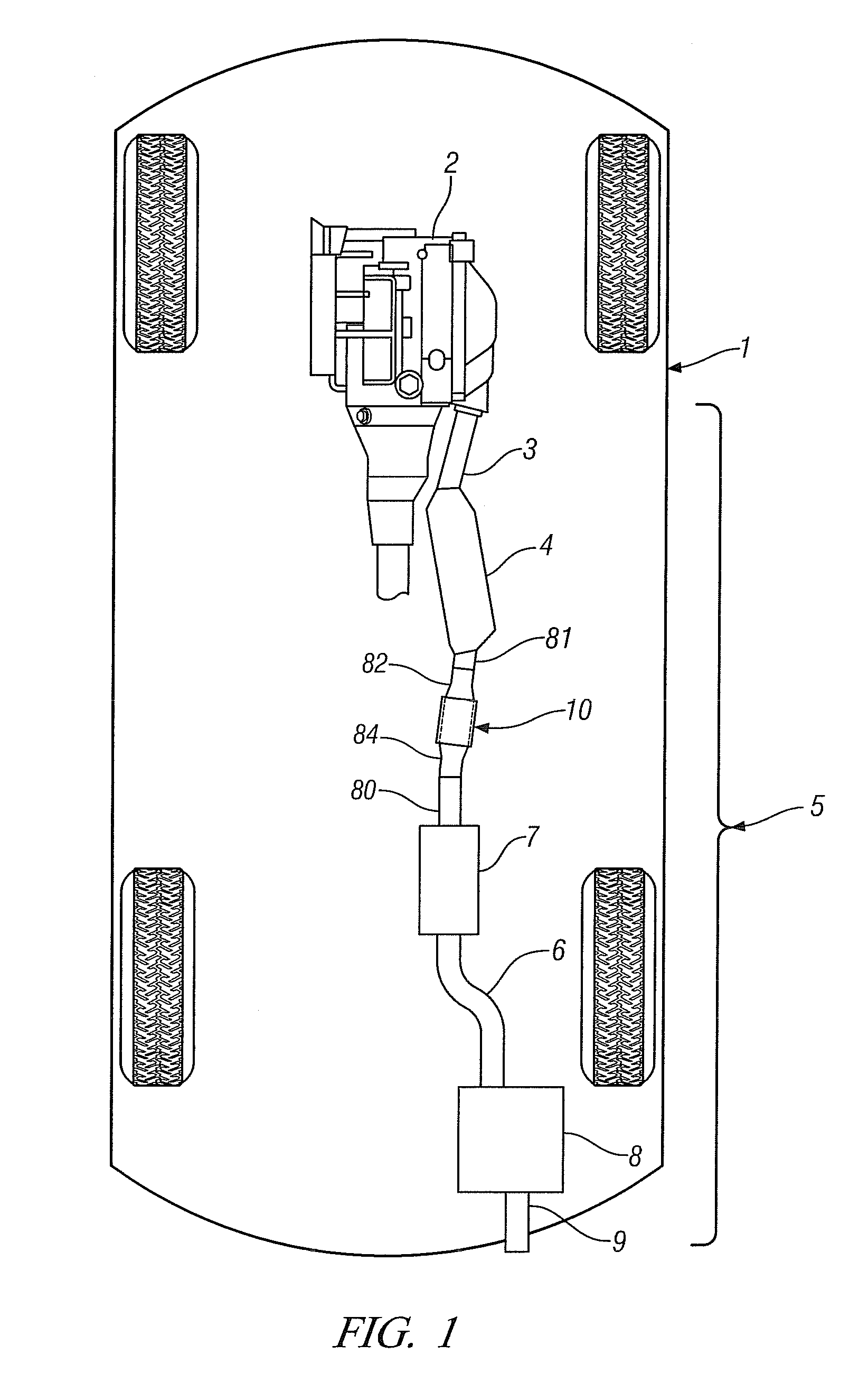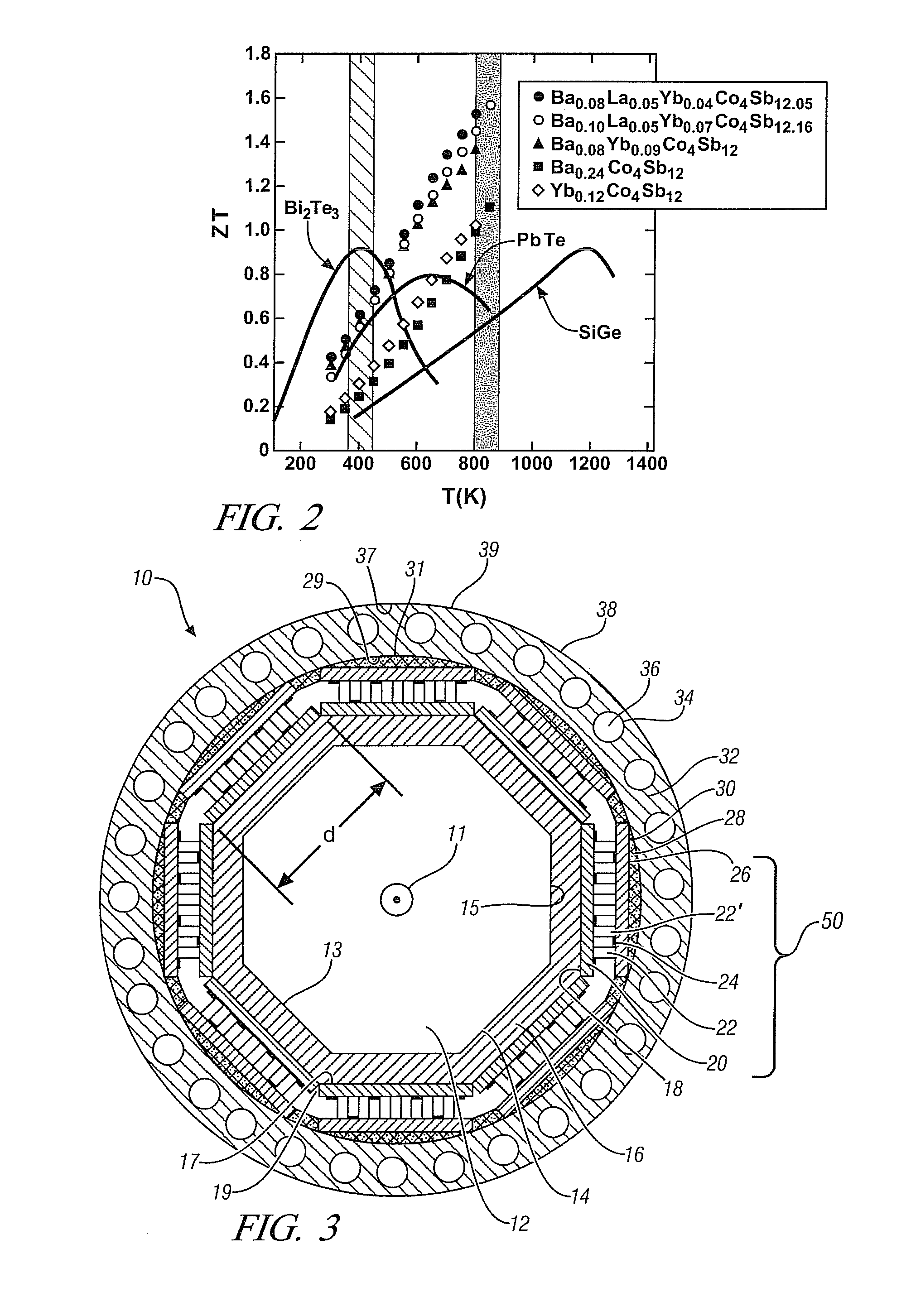Thermoelectric generators incorporating phase-change materials for waste heat recovery from engine exhaust
a technology of phase-change materials and generators, which is applied in the direction of thermoelectric devices, machines/engines, mechanical equipment, etc., can solve the problems of oxidizing, decomposing or otherwise degrading of thermoelectric elements, and achieve the effect of efficient extraction of energy
- Summary
- Abstract
- Description
- Claims
- Application Information
AI Technical Summary
Benefits of technology
Problems solved by technology
Method used
Image
Examples
Embodiment Construction
[0022]FIG. 1 shows, in plan view cutaway, the engine 2 and exhaust system 5 of an automobile 1 as well as a portion of the drive-train by which the engine power is delivered to the rear wheels to propel the vehicle. The exhaust system may comprise major elements and devices such as a catalytic convertor 4, a resonator 7, a muffler 8 and a tailpipe 9 each adapted for passage of exhaust from engine 2 and each serially interconnected by a plurality of hollow pipes or pipe segments identified as 3, 81, 82, 84, 80 and 6. Also shown in exhaust system 5 is a thermoelectric device 10, adapted for extraction of electrical energy from the thermal energy of the engine exhaust stream.
[0023]To enhance catalytic activity on cold engine start, catalytic convertor 4 is preferably positioned as close to the engine as possible. Thermoelectric device 10 is then preferably positioned downstream of but close to, catalytic convertor 6 where the exhaust gas is hottest. This will generally result in the th...
PUM
 Login to View More
Login to View More Abstract
Description
Claims
Application Information
 Login to View More
Login to View More - R&D
- Intellectual Property
- Life Sciences
- Materials
- Tech Scout
- Unparalleled Data Quality
- Higher Quality Content
- 60% Fewer Hallucinations
Browse by: Latest US Patents, China's latest patents, Technical Efficacy Thesaurus, Application Domain, Technology Topic, Popular Technical Reports.
© 2025 PatSnap. All rights reserved.Legal|Privacy policy|Modern Slavery Act Transparency Statement|Sitemap|About US| Contact US: help@patsnap.com



